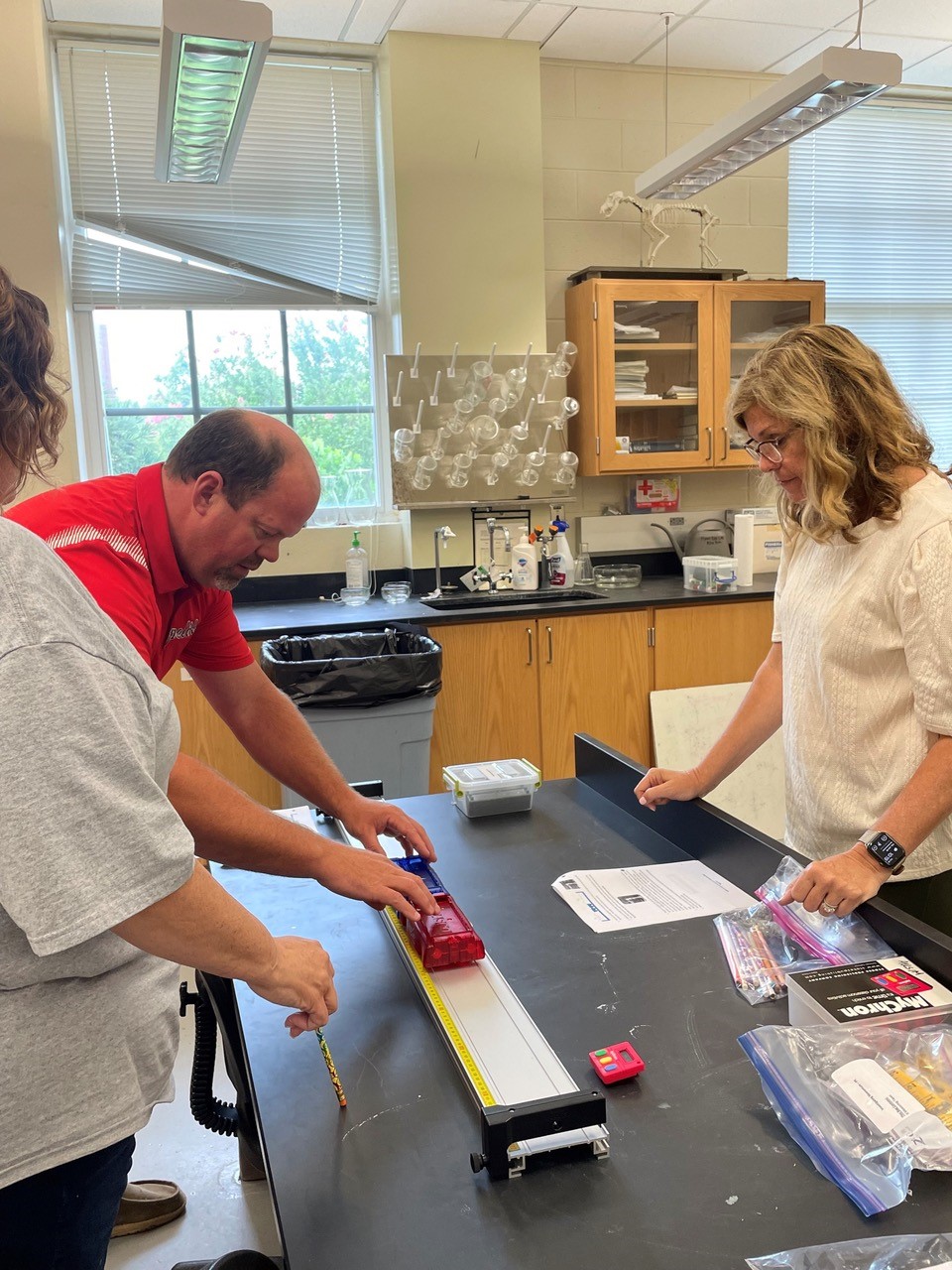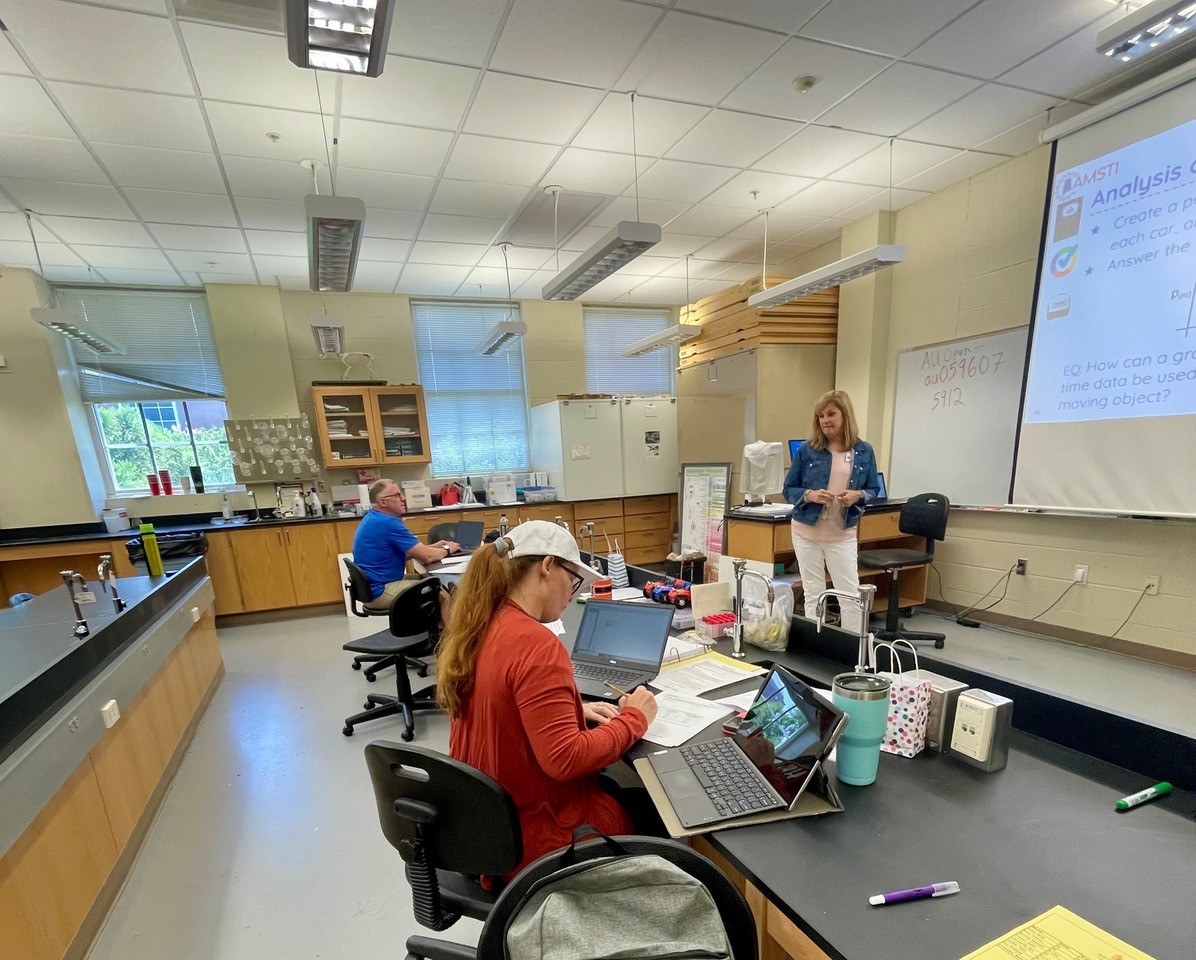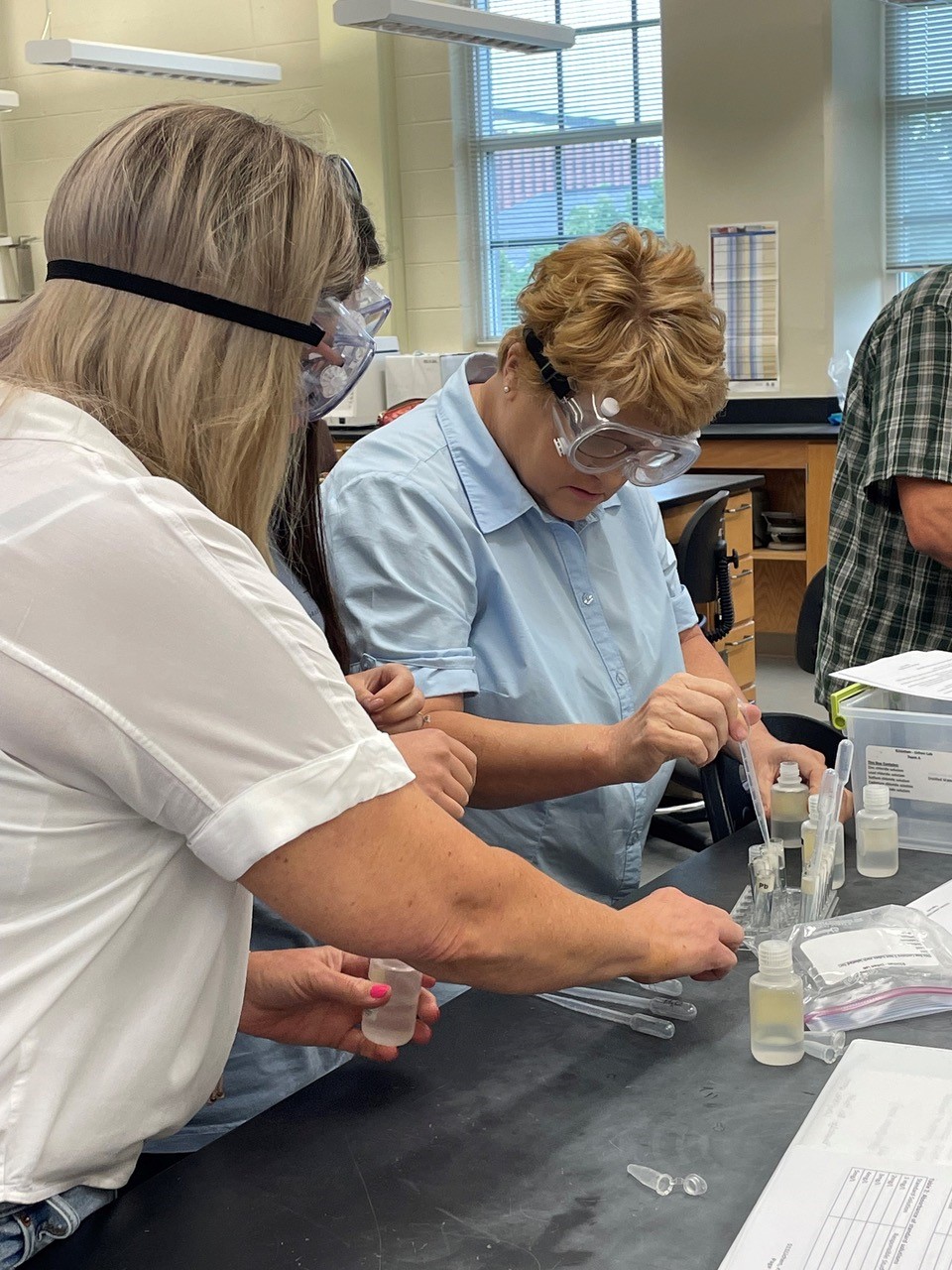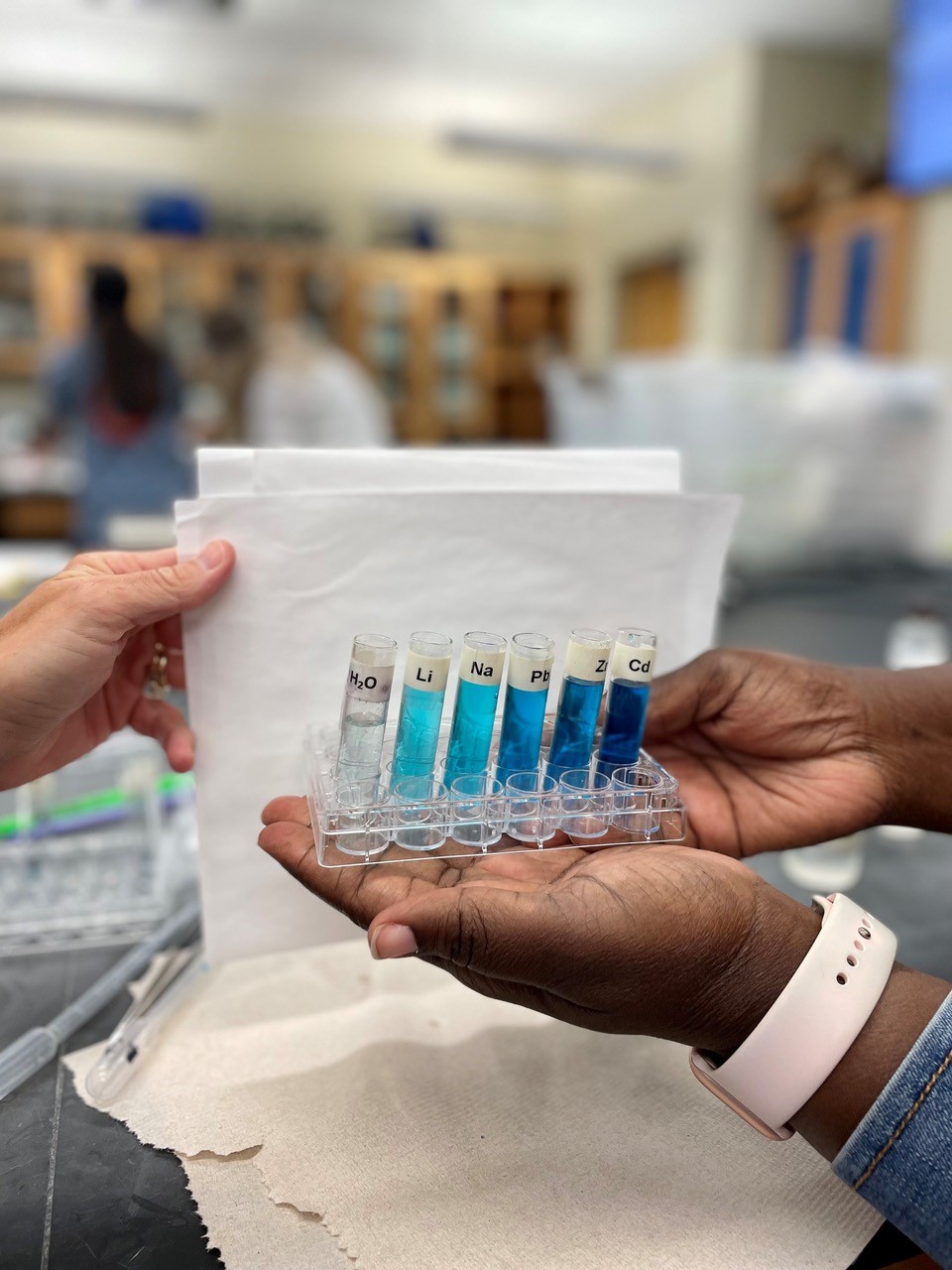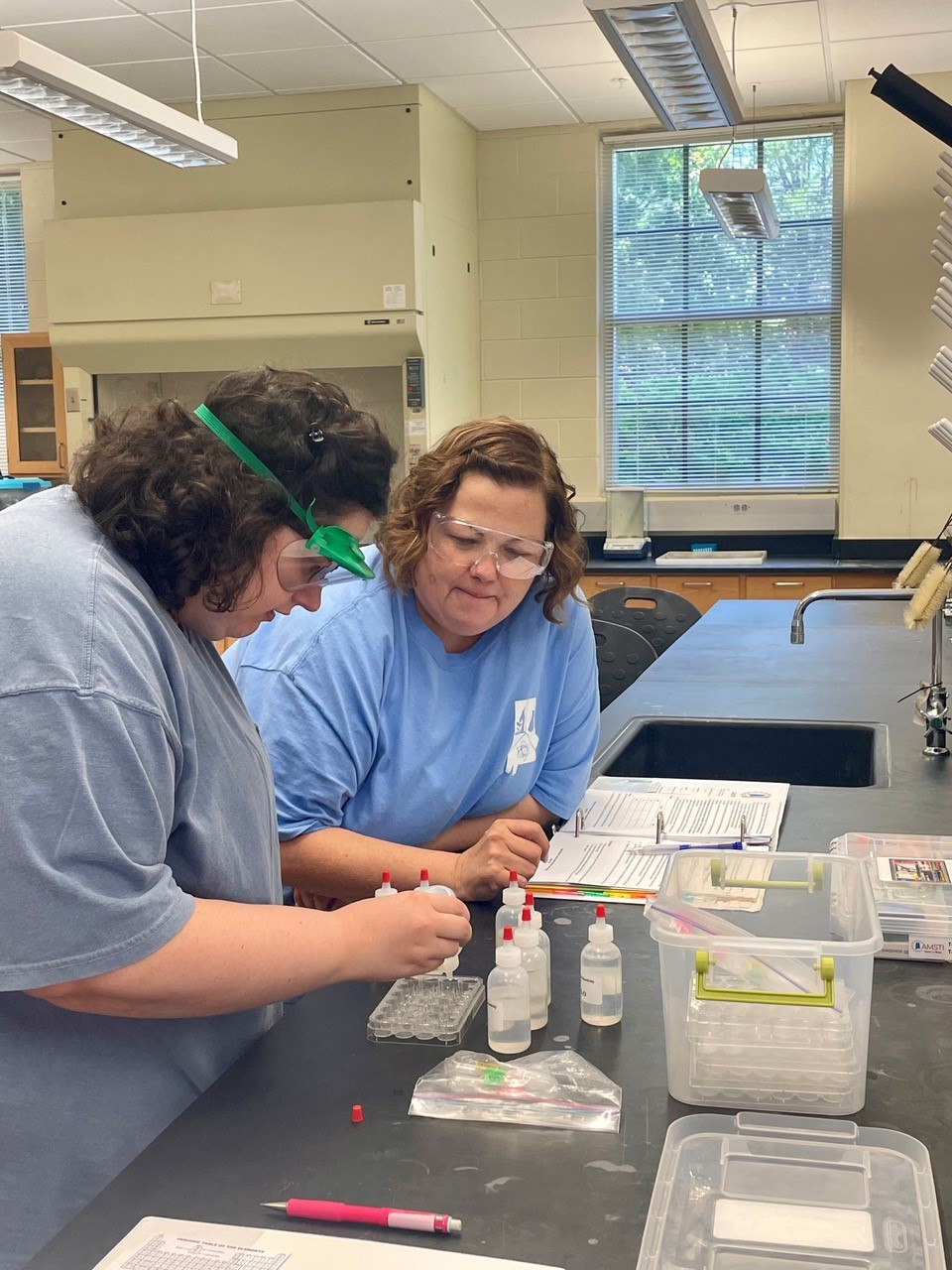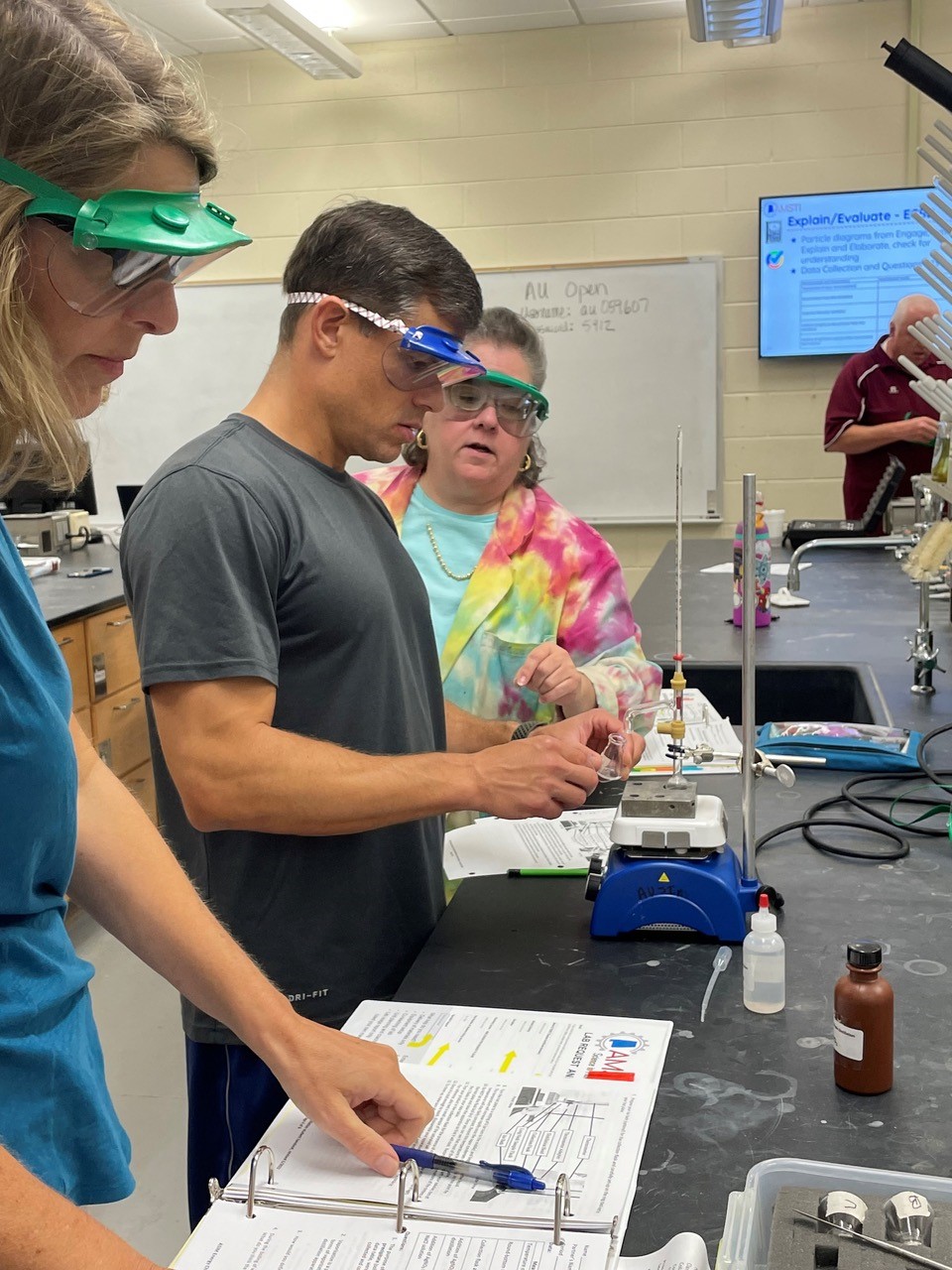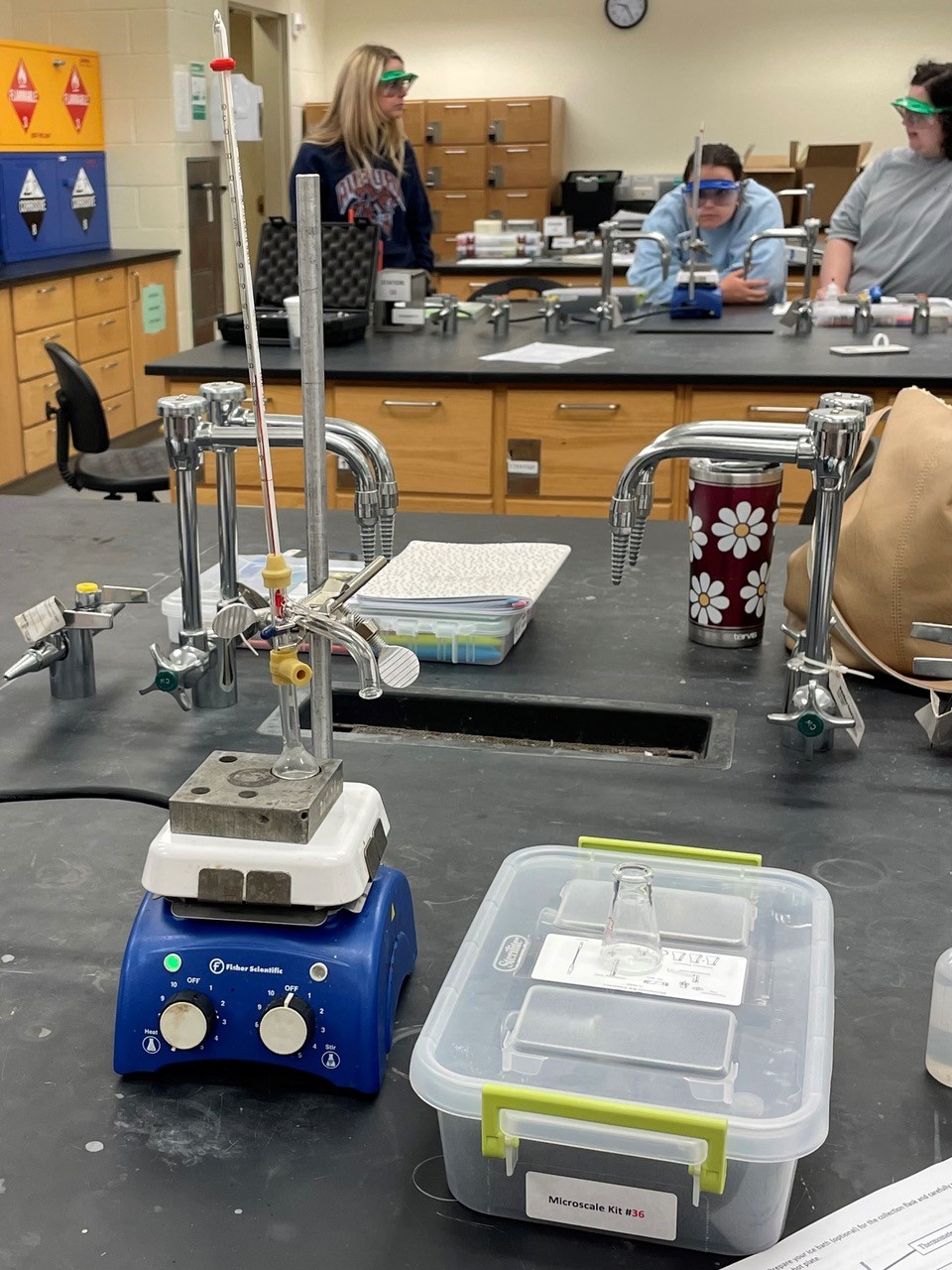COSAM News Articles 2022 July High school teachers receive expert biology, chemistry and physics training at Alabama Science in Motion workshops
High school teachers receive expert biology, chemistry and physics training at Alabama Science in Motion workshops
From June 20-30, Alabama Science in Motion specialists Melissa Kirkland, Roger Birkhead and Dewayne Riddle provided enriching professional development workshops for high school science teachers, with the goal of improving teacher mastery of biology, chemistry and physics subject matter and equipment use.
Held in the Sciences Center Laboratory Building on Auburn’s campus, these workshops provided teachers from Barbour, Bullock, Chambers, Elmore, Lee, Macon, Russell and Tallapoosa counties and beyond with the opportunity to network with peers—sharing both content knowledge and teaching techniques. Teachers were trained on and participated in detailed, hands-on labs that were designed for student instruction, making it easy for them to implement in their high school classrooms.
Alabama Science in Motion, or ASIM, is the high school component of the Alabama Math, Science and Technology Initiative, or AMSTI. Eleven regions of Alabama participate in the ASIM program, and Auburn University’s region is housed in the College of Sciences and Mathematics, or COSAM.
ASIM provides high-tech laboratory experiences for students and effective professional development for teachers. In many instances, the cost of lab equipment involved with classroom instruction would be prohibitive for individual schools or even systems to acquire. Sharing this equipment through ASIM offers equally enriching opportunities to students from different backgrounds and schools.
“Throughout the school year, we provide individualized support for teachers through co-teaching, coaching, technical support and content development,” said Melissa Kirkland, ASIM physics specialist. “Once teachers are trained on labs, they can request lab equipment during the school year, and ASIM specialists will deliver the equipment to the school—even laptops or printers, if applicable—for classroom instruction.”
During this year’s workshop, Kirkland trained teachers in numerous physics labs that focused on physical science, motion and stability, energy, waves and more. In her ‘Investigating Momentum’ lab, teachers used dynamics carts, mass bars, a track, end stops, a meterstick and stopwatch to explore what happens to momentum when objects interact. Through experiment trials, teachers observed patterns when comparing the total momentum before an explosion compared with the total momentum after an explosion.
Roger Birkhead, ASIM biology specialist, not only taught labs on biology topics such as enzymes, cell cycle, macromolecules and homeostasis, but also led an environmental science lab at this year’s training. In his ‘Lichen Lab’, teachers learned how lichens can be used as indicators of air pollution. Using lichen samples, methylene blue, various chemical solutions and a Pasco colorimeter, they measured the capacity the lichens to absorb various chemicals and analyzed lichen survey data to make inferences about air quality.
“Over the course of the training, we cover areas in biology such as genetics, microbiology, ecology, zoology, anatomy and physiology,” said Birkhead. “Teachers can choose which days to attend based on the subject matter that they teach. Some teachers are first-time attendees, and some have attended Science in Motion lab trainings over multiple years.”
Dewayne Riddle, ASIM chemistry specialist, taught labs over the two-week training covering topics like matter and its interactions, motion, stability and energy. In his ‘Energy Changes in Simple Distillation’ lab, teachers became familiar with energy changes, vaporization, volatility and the distillation technique by using the basic microscale organic glassware kit.
Riddle also taught an earth and space lab session this year and noted that Science in Motion at Auburn University is currently the only site offering earth and space training for teachers.
“We had ASIM specialists from different parts of the state join us for the earth and science lab, as well as Alabama State Department of Education representatives,” said Riddle. “This particular training is being reviewed for state-wide implementation.”
“Science in Motion is beneficial because it allows rural schools to have access to specialized lab equipment that otherwise may not be available at their school,” said Kate Miles, a 10th and 11th grade science teacher at Beulah High School. “I utilize questions from these labs in my classroom as a guide to having deeper discussions with students on what they observed.”
Each Science in Motion lab is published online and includes both the Alabama Course of Study literacy and science standards that the lab covers and an experiment write-up that details the full lesson for students. Experiment write-ups are structured around a 5E+IE format that includes an Engage activity, an Explore section, Explain, Evaluate and Elaborate plus Interventions and Acceleration for different learners for each lab.
For more information on Auburn University’s Science in Motion specialists, including a listing of their instructional labs by subject area, visit their website or contact the site office at (334) 844-6950.
Latest Headlines
-
04/18/2024
-
04/18/2024
-
04/18/2024
-
04/17/2024
-
04/12/2024

